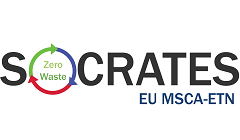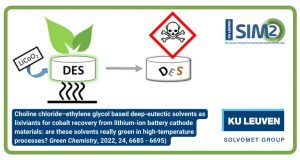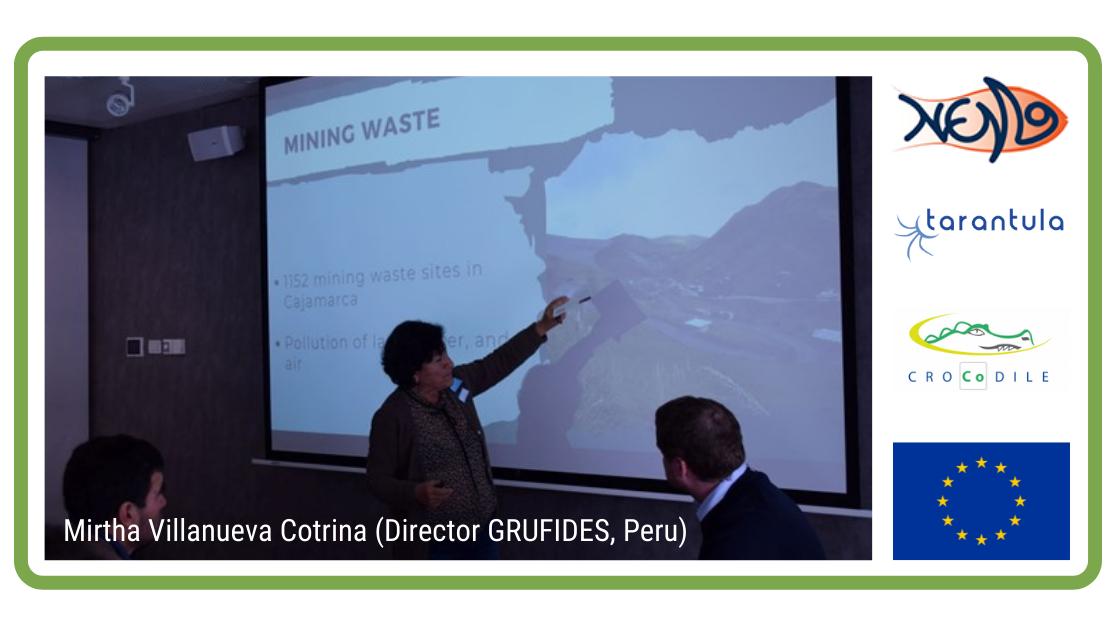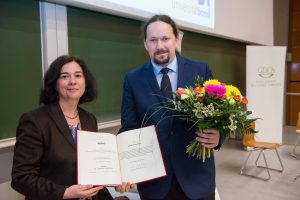
Chemistry lecturer conference in Jena
Foto: Maik Schuck / Weimar
Dr. Oldamur Hollóczki from the Mulliken Center for Theoretical Chemistry was awarded with the prestigious ADUC-prize. Every year, the Prize of the Association of German University Professors in Chemistry (ADUC in German – Arbeitsgemeinschaft Deutscher Universitätsprofessoren und -professorinnen für Chemie) honors up to three junior research group leaders for the establishment of an independent research area. The prize was conferred during the annual chemistry lecturers’ conference.
Dr. Oldamur Hollóczki was given this great honor for the development of original concepts for the description of reaction mechanisms in novel fluids. He combines synthetic chemistry, theoretical chemistry and simulations for the detailed understanding of structure, dynamics and reactivity of ionic liquids,1-3 carbenes4-6 and fluoroalcohols.7
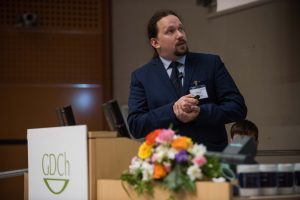
Chemistry lecturer conference in Jena
Foto: Maik Schuck / Weimar
Together with Prof. Kirchner, Dr. Hollóczki is supervising the research work of ESRs 9 and 10 who ‘Study of solvent miscibility by computational methods’ and work on the ‘In-silico design of selective metal extractants’. With this research, the ESRs aim to study the miscibility of solvents and the corresponding substituent effects in systems relevant to metal recovery. After the characterization of the structure and dynamics at relevant liquid-liquid interfaces, the goal is to able to predict suitable solvent pairs for non-aqueous solvent extraction. Based on this, the development of large-scale methods that describe the dynamics and the energetics of the complex formation between the desired ligands and metals is foreseen. The objective here is to understand the coordination and solubility of different metals in solvents, and to establish the principles of and to design solvents and/or solvent mixtures for the selective recovery of the chosen metals. This research should lead to metal complexes with a high solubility in non-polar solvents and to new structural leads for the design of extractants. As such, the ESRs contribute to understand the mass transfer between the two liquid phases at the molecular level and to predict of the optimised structure of the extractant solvent to achieve high rates for the mass transfer.
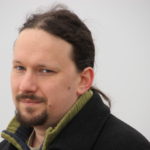 |
Oldamur Hollóczki (University of Bonn) studied at the Budapest University of Technology and Economics, where he carried out his PhD (awarded in 2011) with Prof. László Nyulászi. From 2011–2012, he was a scientific co‐worker at the Hungarian Academy of Sciences. In 2012 he was awarded the Alexander von Humboldt Fellowship to join the group of Prof. Barbara Kirchner at the University of Leipzig, from where the group moved to the University of Bonn in 2013, where he is currently working towards his habilitation. |
- Hollóczki, O.; Firaha, D. S.; Brehm, M.; Cybik, R.; Wild, M.; Stark, A. Kirchner, B. Carbene Formation in Ionic Liquids: Spontaneous, Induced, or Prohibited? Phys. Chem. B. 2013, 117, 5898. [full text]
- Hollóczki, O. “Uranyl(VI) Complexes from Imidazolium Acetate Ionic Liquids: Carbenes versus Acetates?” Chem. 2014, 53, 835. [full text]
- Gibalova, A. V.; Firaha, D. S.; Hollóczki, O. “Basic Phosphonium Ionic Liquids as Wittig Reagents” ACS Omega, 2017, 2, 2901. [full text]
- Hollóczki, O. “Unveiling the peculiar hydrogen bonding behavior of solvated N-heterocyclic carbenes” Chem. Chem. Phys. 2016, 18, 126. [full text]
- Gehrke, S.; Hollóczki, O. “A Molecular Mechanical Model for N-heterocyclic Carbenes” Chem. Chem. Phys. 2016, 18, 22070. [full text]
- Gehrke, S.; Hollóczki, O. “Are There Carbenes in N-heterocyclic Carbene Organocatalysis?” Chem. Int. Ed. 2017, 56, 16395. [full text]
- Hollóczki, O.; Berkessel, A.; Mars, J.; Mezger, M.; Wiebe, A.; Waldvogel, S. R.; Kirchner, B. “The Catalytic Effect of Fluoroalcohol Mixtures Depends on Domain Formation” ACS Catal. 2017, 7, 1846. [full text]
